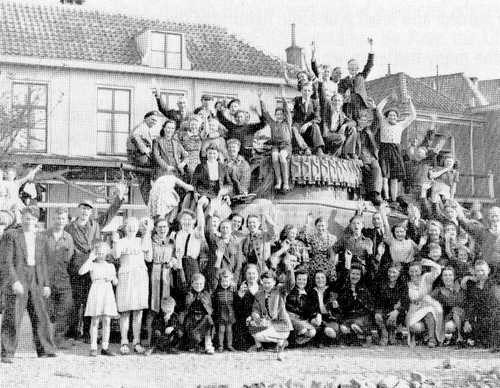
"B" Squadron, Lord Strathcona's Horse
Liberation party for "B" Squadron by the citizens of Ermolo, Holland, March 18, 1945. Interesting to note the positioning of the welded on tank tracks on the tank turret. It seems that the positioning of this added protection on Canadian tanks depended on the whim of the tank commander as they appear to be "tacked" on in various positions depending on the tank. Perhaps it depended on the initiative of the various crew members that would be sitting behind it ? Perhaps some of the website participants can shed some light on this for me ?
This is a companion discussion topic for the original entry at https://www.ww2incolor.com/gallery/canadian-forces/41599/%22b%22-squadron-lord-strathcona's-horse
